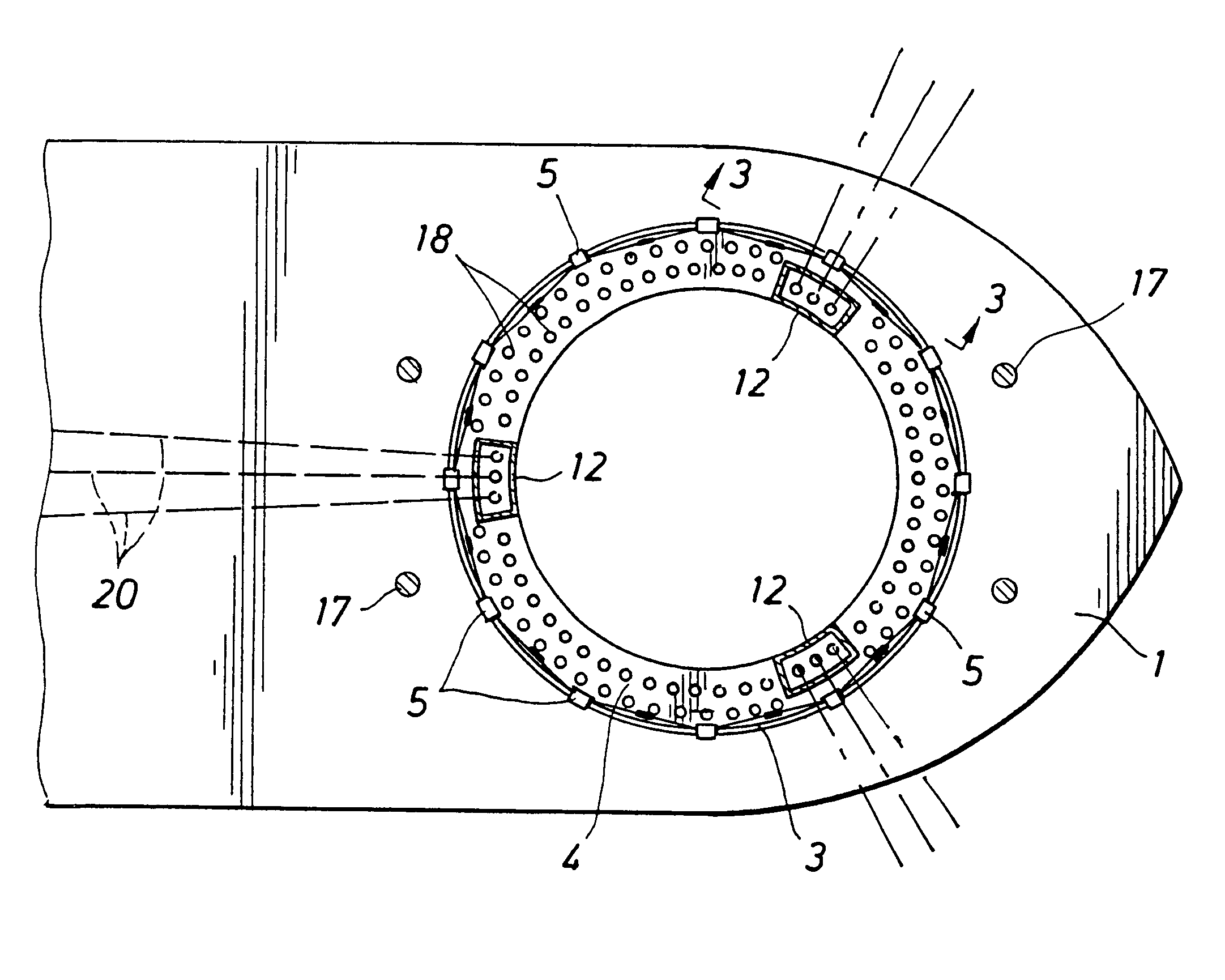Single point mooring with suspension turret
a single-point mooring and suspension turret technology, applied in the field of mooring systems, can solve the problems of reducing the efficiency of the interface, requiring additional cost, and reducing the efficiency of the motion interface by as much as fifty percen
- Summary
- Abstract
- Description
- Claims
- Application Information
AI Technical Summary
Benefits of technology
Problems solved by technology
Method used
Image
Examples
Embodiment Construction
FIGS. 1 and 2 illustrate an embodiment of the invention in plan and profile views of the structural and mechanical arrangement of the suspension turret 10. The structural and mechanical arrangement supports a Single Point Mooring Turret 4 through a pendular suspension system consisting of bogie housings 5, or "bogies", having one or more wheels 6 per bogie 5, arranged to roll around the circumference of the moonpool on cambered or dished (not shown) rails 3. The rails 3 allow the bogies 5 to move in the radial direction while supporting their vertical loads, without substantially increasing radial loads thereby decoupling the bearing loads from radial hull deflections due to ovality. Radial flexure is achieved by hanging the turret 4 from the bogies 5 via suspension members 22 such as chains, cables, rods, columns, or the like, between the bogies 5 and riser support structure 19 of turret 4, such that the bogies 5 are not rigidly connected to the turret 4 in the radial direction.
FIG...
PUM
 Login to View More
Login to View More Abstract
Description
Claims
Application Information
 Login to View More
Login to View More - R&D
- Intellectual Property
- Life Sciences
- Materials
- Tech Scout
- Unparalleled Data Quality
- Higher Quality Content
- 60% Fewer Hallucinations
Browse by: Latest US Patents, China's latest patents, Technical Efficacy Thesaurus, Application Domain, Technology Topic, Popular Technical Reports.
© 2025 PatSnap. All rights reserved.Legal|Privacy policy|Modern Slavery Act Transparency Statement|Sitemap|About US| Contact US: help@patsnap.com



